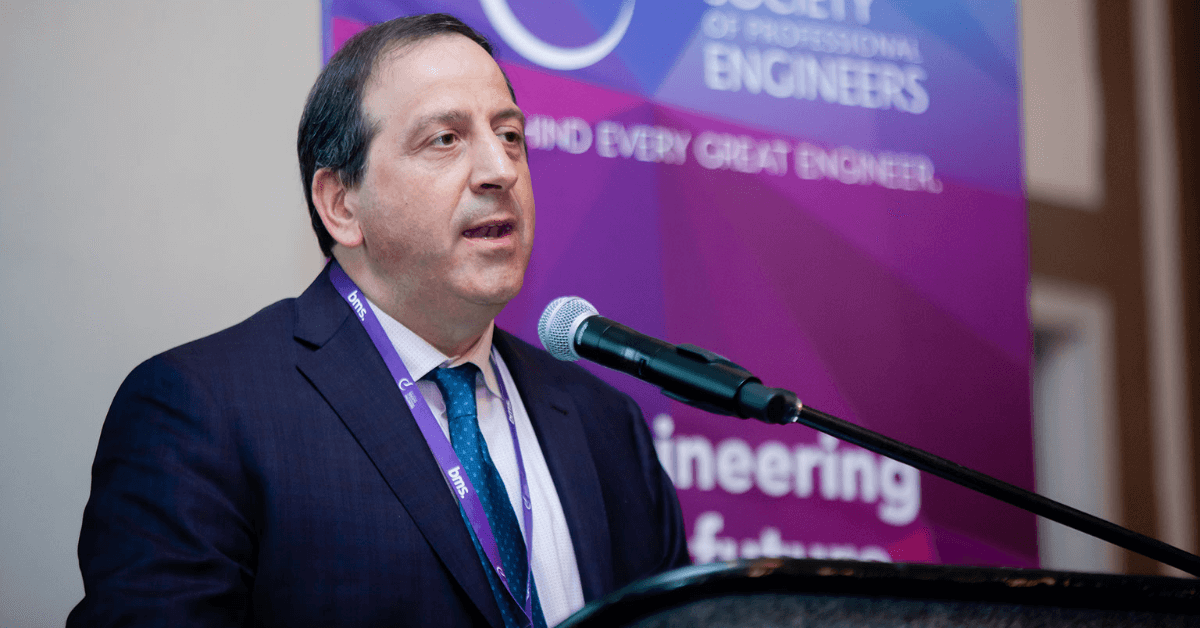October 15, 2020 marks the six-year anniversary of the release of the Report of the Elliot Lake Inquiry by Hon. Paul Bélanger. I had only started at OSPE a few months before the report came out, and I remember delving into the findings of the report over my first few weeks, trying to understand how such a failure of the system the public relies on to keep us safe at work, home and at play had led to such a dramatic loss of life. Having spent 15 years in the occupational health and safety prevention system prior to joining OSPE, I unfortunately had grown accustomed to seeing complacency and lack of focus on preventative health and safety measures dramatically affect workplaces and families, but never have I witnessed how a failure had effected an entire community the way the Elliot Lake tragedy did.
Thinking I understood how catastrophic events lead to systemic changes, I naively looked forward to the lessons learned outlined in the report, and the carefully worded recommendations put forward by Justice Bélanger. These were supposed to establish and reinforce the necessary checks and balances to ensure these types of events never happened again.
Fast forward six years, and reviewing a few recent developments, it is surprising how little has changed. In March, 2019, Ontario Coroner Dr. David Cameron, officiated an inquest into the death of Radiohead Drum Technician Scott Johnson, who died as a result of a partial stage collapse at Downsview Park. Many of the recommendations in April 2019 mirrored the recommendations Justice Bélanger wrote in his report, five years earlier. There was enough blame in these two inquests to go around to the engineers involved, plus inspectors, building officials, local governments, and owners/operators.
The next month, May 2019, PEO issued the results of an external regulatory review conducted by the UK Professional Standards Authority. These results highlighted significant deficiencies within the Regulator of the practice of Professional Engineering in Ontario. I would speculate that a similar review of regulators in other provinces would find similar deficiencies; as the government of British Columbia recently did when they conducted their own regulatory reviews of five regulators, including engineers and geoscientists.

Just a few weeks ago, OSPE published a blog outlining the story of OSPE member Mr. Gerald Catt, P.Eng., who had his engineering seal duplicated and used on building documents several dozen times over the past few months without his knowledge. Especially maddening to Gerald is that this exact incident happened to him several years ago, and while that individual was charged by the OPP, it seems like no preventative measures were put in place.
If we examine the list of buildings where he is the “Engineer on Record” but which he did not actually work on, we can determine there are close to 100 buildings occupied in Ontario where no engineer has actually reviewed or deemed safe—they simply bear the fraudulent stamp. Further review of documents obtained through Freedom of Information requests has shown that some of his original drawings have had his seal removed, “allegedly” altered, dated and then sealed by another Professional Engineer after the building has already been built! This means the “official drawings” of the building don’t match the actual dimensions of the building, and certain elements of the design doesn’t meet the building and/or fire codes, yet the buildings are fully occupied and certified as safe by local building officials. This is incredibly dangerous as it bypasses all the rules and regulations put in place to protect the public.
When I reached out to other OSPE members to see if they were aware of similar types of incidents within their networks, many responded with similar horror stories, albeit not to the volume of Mr. Catt’s experience. Is Gerald just unlucky? Or maybe we’re lucky, as he spent several hundred of hours of his own time and thousands of dollars of his own money to launch his own investigation when no one else offered to help. As he told me, he could have saved himself a lot of time, money and grief if he just looked the other way. Fortunately, his duty to his profession and the public, and his commitment to the oath of ethics he took seriously, and so he raised the alarm.
Six years later, are we any closer to implementing safe regulations? Are the bodies that were established to protect the public interest acting accordingly, or are they acting in their own self-interest? Who, in turn, is responsible for holding Regulators accountable? Who is responsible for holding governments accountable? At what point do the practitioners in a profession say enough is enough and demand more from everyone in their professional network, their industry, and their sector?
Many of the deficiencies identified in the Elliot Lake Report, and echoed in the Scott Johnson Death Inquest, still exist. OSPE’s recent conversations with PEO, the Ontario Building Officials Association, officials and Ministers in the Government of Ontario and others have not provided us with the confidence that these shortcomings will be addressed anytime soon.
One of the main recommendations is for Ontario to follow the lead of every other provincial regulator in Ontario, North America, and almost every other jurisdiction in the world by implementing a mandatory continuing professional development (CPD) program. It was a key recommendation in the three reports highlighted earlier. If you were to survey 1000 residents in Ontario and asked them if they expected Professional Engineers in Ontario to have implemented a mandatory CPD Program for engineers, I would expect over 90% would have answered yes, because they feel it is the bare minimum requirement to maintain a licence. In the recent PEO Registrar’s report, compliance to the voluntary PEAK program is down to 15% (as of March 2020). OSPE feels this is unacceptable.
What will it take for true regulatory reform to happen? Will it take another colossal structural failure that results in significant loss of life? Will it take a government that is looking to move forward with a political agenda? Or will it take the practitioners to say “Enough!”, we must speak out and call out the system that is broken, fix it, the way Gerald Catt, P.Eng tried to do.
OSPE members have a small window of time to grasp the opportunity to call for change and redesign a system that puts public safety first. A system where modern regulators establish best practices, respond quickly to emerging disciplines, provide quality assurance and assesses competencies of its practitioners, all while effectively identifying and disciplining those that don’t measure up to the high level of shared standards that is needed.
If we don’t take advantage of this opportunity now, and wait until the next catastrophe, then governments will be forced to act and implement a solution that is neither designed in collaboration with the profession and the public, nor will it be effective or efficient.
It’s up to you OSPE members. The time is now. We can’t wait another six years.





Comments (5)
Great article. I share the concerns about PEO Council’s reluctance to act as a responsible regulator. I was one of the lead members of the task force at PEO that worked through the Elliot Lake Inquiry as the hearing were held and I testified, on PEO’s behalf, in the roundtable of experts that formed part of the work of the inquiry. Our Task Force, on behalf of PEO, prepared a series of excellent recommendations as to how to better regulate professional engineering in order to avoid the gaps and mistakes that resulted in the terrible collapse of the Algo Mall. The Belanger Commission agreed with almost all of our recommendations and included them in the Commission’s recommendations. Unfortunately, PEO Council itself made the decision to not implement most of PEO’s own recommendations, including mandatory CPD and the creation of a structural engineering specialist designation. Interestingly these same recommendations also came out of the Radiohead Stage collapse and the Station Square collapse in BC, and yet PEO Council has repeatedly and purposely defied these types of public safety recommendations. I give high marks to PEO staff and especially registrar Johnny Zuccon — he gets it; but the problem has always been PEO Council. High marks also to former president Dave Brown — he too put a lot of effort into trying to get Council to step up to its responsibilities, and I’ve started to see a bit of a glimmer of light in the current Council. And so to the members of PEO Council I ask: how many more collapses and deaths will it take for PEO Council to finally step up and become a responsible engineering regulator?
Well said Mr Roney! Thanks, as always, for your support!
I agree with Chris and Sandro. As a forensic engineering practitioner, we see the evidence of lack of diligence on a daily basis. If you think you are competent, but haven’t done ANY professional development for years, do you really deserve to have P.Eng. behind your name? Could you withstand a cross-examination about your knowledge (like we have to do) without getting flustered, when asked ‘Why don’t you participate in the PEAK programme?’ Awkward silence. The boom will come down, like it did in Quebec where the OIQ and the government there said enough is enough. I am proud to keep my Eng. status there, where you HAVE to enforce your own competence!
In addition to Mr. Roney, P.Eng., I too was a member of PEO’s Elliot Lake advisory committee. As Chris has noted, the recommendations formulated by that committee were passed in Council and submitted to the Belanger Commission in response to the Algo Mall collapse. Although the majority of our recommendations were included in the final report of the Belanger Commission PEO Council has simply failed to act on a number of them to this date. For instance, the Belanger report recommended that a form of mandatory CPD be put in place within 18 months and to date, many years after the report was released, PEO’s CPD program (PEAK) remains voluntary and marginally utilized.
This blog outlines a host of issues PEO has failed to address over time even with abundant evidence that change must be adopted. I commend Mr. Perruzza and the OSPE board for keeping PEO and their board on the hot seat and demanding change.
Until PEO recognizes that there primary role is that of a regulator working in the public interest and not a members club, sadly little will change. However, I am hopeful that the strong leadership of a highly knowledgeable Registrar (Johnny Zuccon, P.Eng.) along with a number of Councillors who understand the immediate need for change, that movement towards modernizing it as a regulator is possible.
In the meantime, I encourage OSPE to keep their foot firmly planted on the gas peddle and continue to hold PEO accountable. Doing so is absolutely in the public interest along with that of their members.
In the early 2000’s, Lambton Mall in Sarnia, Ontario, had a similar roof collapse. One person died. rooftop air handlers were added the previous summer. Then snow load was a contributing factor that triggered the eventual collapse. Water dripping into the Hallmark Store was the tell-tale sign. Nobody paid attention. The fact that water dripping from above should initiate an evacuation, was not shared with mall owners and renters in Ontario, or Canada wide for that matter. Perhaps the MOL who do annual inspections could spread warning data sheets and save a life if not the roof.
Leave a Comment